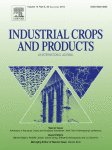 Authors: Marinella TSAKALOVA, Ta-Chen LIN, Aidong YANG, Antonis C. KOKOSSIS
Authors: Marinella TSAKALOVA, Ta-Chen LIN, Aidong YANG, Antonis C. KOKOSSIS
Affiliations: Department of Chemical and Process Engineering, Faculty of Engineering and Physical Sciences, University of Surrey, Guildford GU2 7XH, UK and School of Chemical Engineering, National Technical University of Athens, Greece
Reference: Industrial Crops and Products 75 (2015) 103–113
Abstract: “The integration of renewable biomass feedstocks is receiving primal attention in energy and process industries. The conversion of biomass is typically faced with multiple options with respect to feedstocks,processing paths and product portfolios…”
DOI: 10.1016/j.indcrop.2015.05.035
Comments: in section 2.2 of the paper, the authors state that “The information stored in each UoS has been produced by offline simulation studies. In principle, flowsheeting software can be directly invoked and, through CAPE-OPEN (www.colan.org) standards,integrated with each other.”. The exact meaning of this statement remains unclear. If flowsheet software can be integrated one with each other, the integration takes place at the sub-level of any process modelling environment (PME). Integration of PMEs one with another has been done: a COFE Flowsheet may be transformed into a CAPE-OPEN Unit Operation and plugged into another PME. May be Solidsim was the first process simulator to enable that and to be tested in Aspen Plus where the process involving gases and liquids could be modelled and a SolidSIm flowsheet addressing the process section dealing with solids was integrated in Aspen Plus as a Unit Operation. But such an interaction remains very specific in the sense that one PME models a part of a larger flowsheet modelled in another PME. As mentioned before the exact goal pursued by the authors and may be calling for CAPE-OPEN technology to be used, remains to be explicited.
